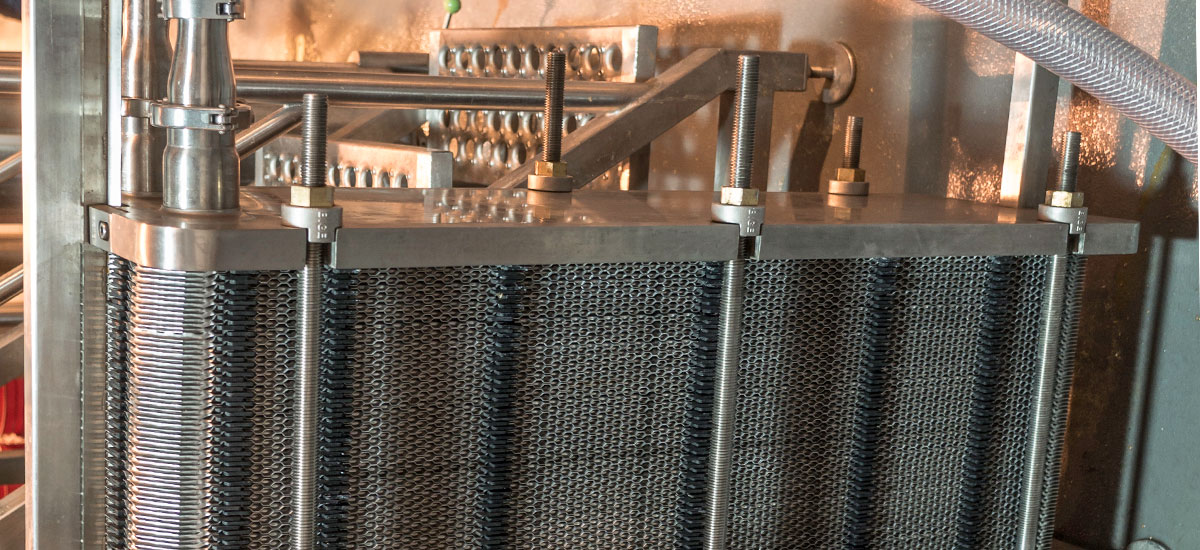
Curse of the Aluminum Heat Exchanger
Aluminum has always been used in various cooling systems, such as injection molding. Over the past several years however, the water treatment industry has seen even more use of the metal in heat exchangers and hot water boilers. The reason for this industry shift is the light weight, easy fabrication properties and excellent heat transfer characteristics of aluminum. The problem this presents is that aluminum doesn’t play very well with the traditional treatment chemistry used in closed systems. This week’s blog will review some of the basics with aluminum metallurgy and discuss some of the keys for treatment.
As we stated, aluminum doesn’t play well with the other metals used in most systems. It is at the lower end of the galvanic series, meaning it is less noble or more susceptible to galvanic attack. Copper and aluminum should always be isolated and in general the best practice is to isolate dissimilar metals with di-electric unions where possible.
Controlling aluminum corrosion
One of the most critical items for controlling aluminum corrosion is to control pH in the proper range. The pH levels to minimize corrosion are very different for aluminum than they are for copper and steel. Historically, closed loops have been operated in the 9-10 pH range, which offered ideal protection for the mixed metallurgy encountered in these systems. Aluminum systems must be controlled in the 6.5-8.5 pH range, despite often having mixed metallurgy as well. The reason for this is that aluminum is a self-passivating metal that forms its own oxide film. This oxide layer is dissolved at either extreme with pH. The goal then becomes to provide the proper pH range for aluminum while protecting the other metals in the system with a blend of proper chemistry.
Proper startup and program conversion are also critical for aluminum based systems. Again, traditional chemistries for cleaning and startup are alkaline in nature, often using phosphates. This would be harmful for the aluminum metal so alternative chemistries need to be used. Newer neutral pH cleaners must be used for aluminum systems to remove the oil and other contaminants before new system startup or if traditional chemistry is used for the pre-op cleaning, then the aluminum equipment must be isolated from the rest of the system.
A final note on pH in these systems. Often times we will see pH drift upwards in a system. This will have to be adjusted down to keep in proper control otherwise corrosion performance will suffer in the system. While this is OK and acceptable for performance as long as pH control is maintained, it is not ideal and can prove trying on your patience. As discussed in the previous paragraph, proper program conversion strategies can help alleviate this phenomenon.
Aluminum system treatment doesn’t have to be feared. With proper understanding of what will happen in the system and proper treatment products, these systems can be treated successfully. With proper guidance through a conversion, you will have a worry free system.
Avoid the curse of aluminum. Contact QualiChem today to understand what your options are for aluminum systems.



